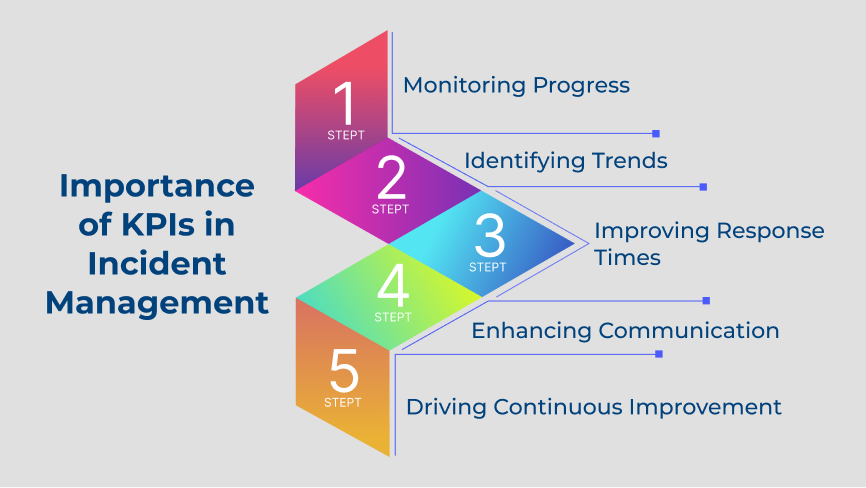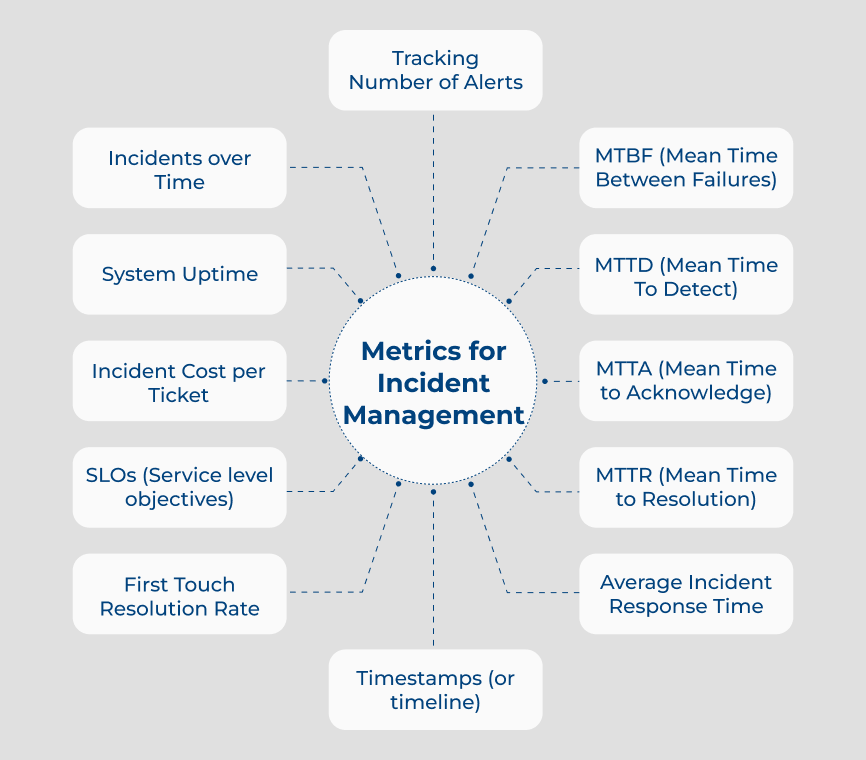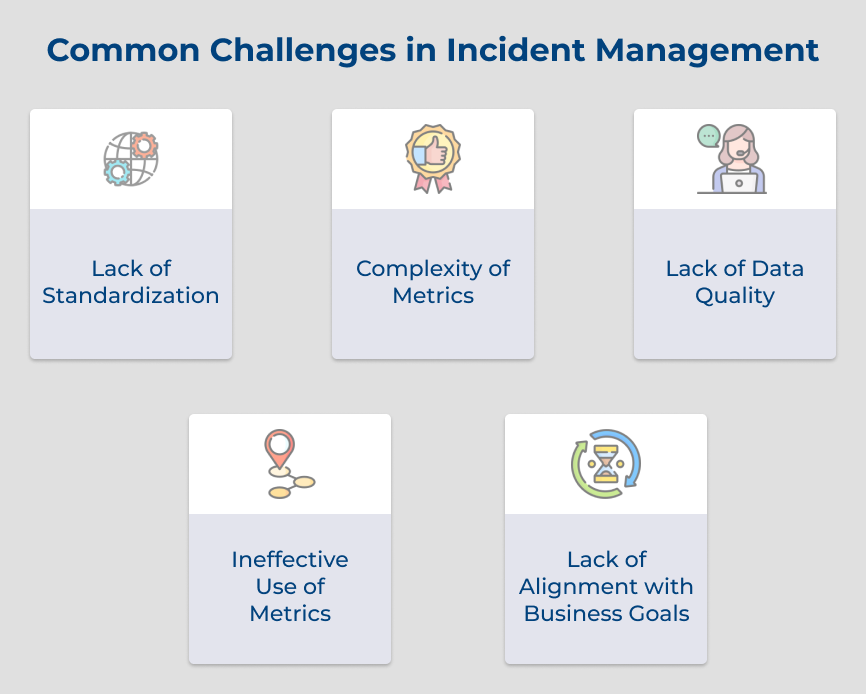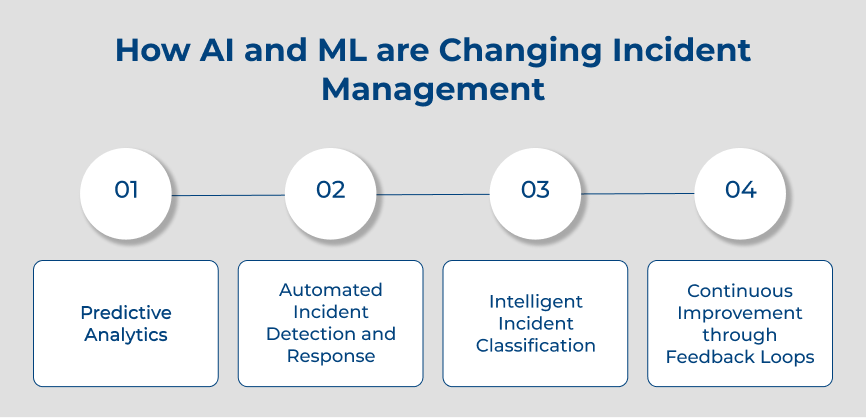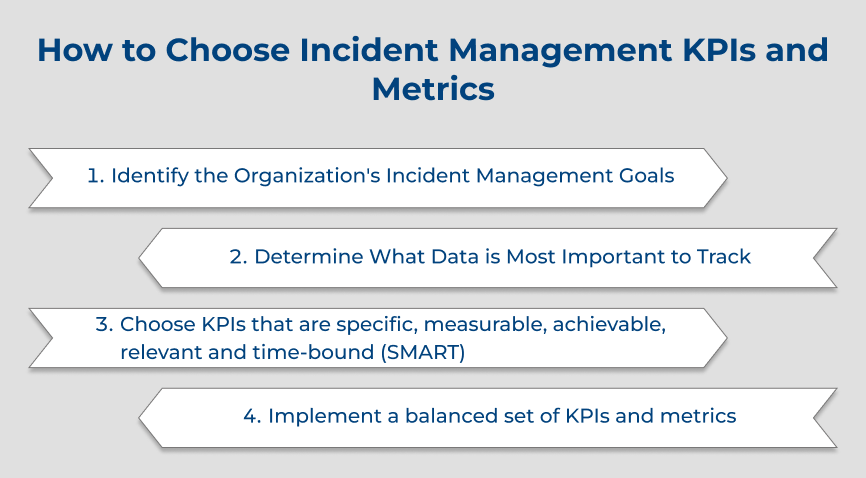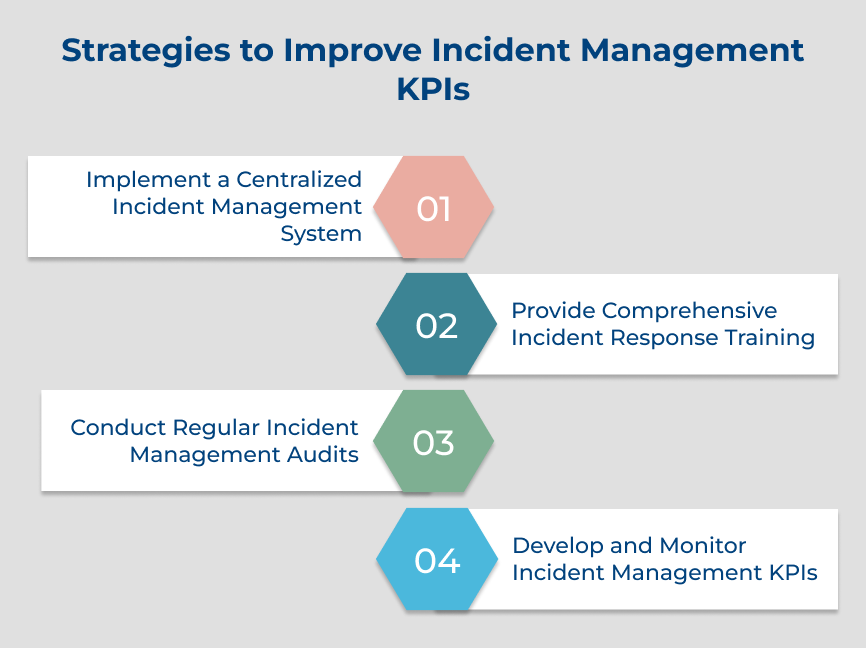1. Identify the Organization’s Incident Management Goals
Before selecting KPIs and metrics, it’s important to clearly define the organization’s incident management goals. It reduces incident resolution time, minimizes business impact and enhances customer satisfaction. Understanding the goals can help tailor the KPIs and metrics to measure success in those specific areas.
2. Determine What Data is Most Important to Track
Once businesses establish incident management goals, they can identify the crucial data points to track. The metrics might cover incident resolution time, severity, volume, customer satisfaction and business impact. Key data points can enhance measuring incident management process effectiveness.
3. Choose KPIs that are Specific, Measurable, Achievable, Relevant and Time-bound (SMART)
When choosing KPIs, they must be SMART: specific, measurable, achievable, relevant and time-bound. Let’s assume a SMART KPI could be to reduce incident resolution time by 20% within six months. Setting SMART KPIs defines success and tracks progress toward incident management goals.
4. Implement a Balanced Set of KPIs and Metrics
Implementing a balanced set of KPIs and metrics is crucial to cover various aspects of incident management. It includes incident resolution time, customer satisfaction ratings and incident impact on business operations. Utilizing diverse KPIs provides a complete overview of incident management performance.
5 Incident Management KPIs Examples
Explore the five essential incident management KPIs with real-world examples, enabling you to fine-tune your processes and enhance your incident response.
1. Amazon
Amazon, a leading e-commerce company, prioritizes incident management KPIs to maintain smooth platform operations. The company monitors MTTR, Incident Response Time and Customer Impact Score to assess incident response efficiency. It helps to minimize customer disruptions.
2. Uber
Uber, a leading ride-sharing company, relies heavily on incident management KPIs to maintain the safety of its platform. The company tracks metrics like Incident Resolution Rate, Incident Severity Index and Incident Response Time. It aids in promptly resolving issues affecting drivers and riders for a smooth experience.
3. Spotify
Spotify, a popular music streaming service understands the importance of incident management in maintaining user retention. The company monitors KPIs like Incident Detection Rate, Resolution Time and Impact Score to address technical issues promptly.
4. Delta Airlines
Delta Airlines, a major airline carrier, prioritizes incident management KPIs to enhance operations and customer service. The company monitors metrics such as Flight Delay Rate, On-Time Performance and Customer Satisfaction to promptly address flight issues
5. Netflix
Netflix, a top streaming service, uses incident management KPIs for platform reliability and performance. The company measures metrics such as Downtime Percentage, Incident Response Time and Customer Retention Rate. It assists in promptly resolving service interruptions and maintaining uninterrupted access to its extensive library for subscribers.
Strategies to Improve Incident Management KPIs
Let’s dive into actionable strategies that can transform your incident management framework and elevate your performance metrics to new heights.






